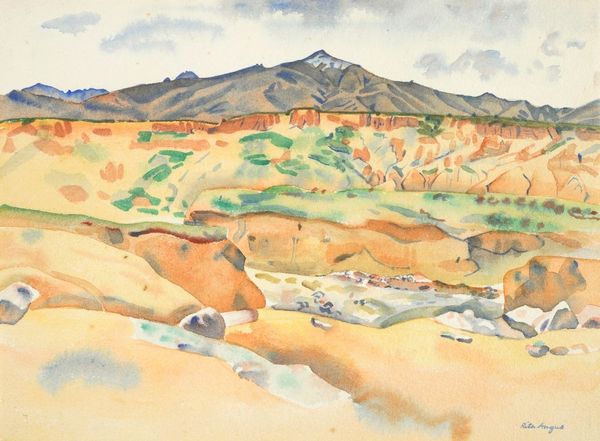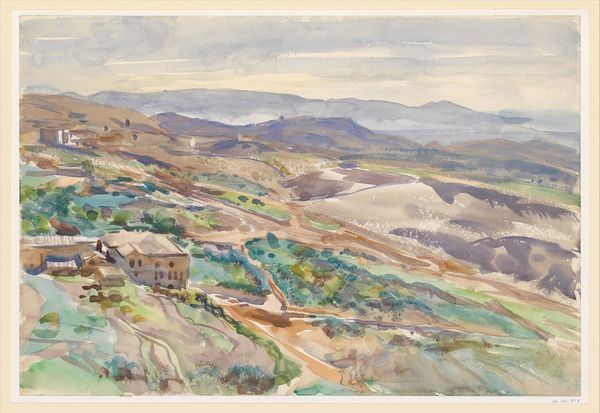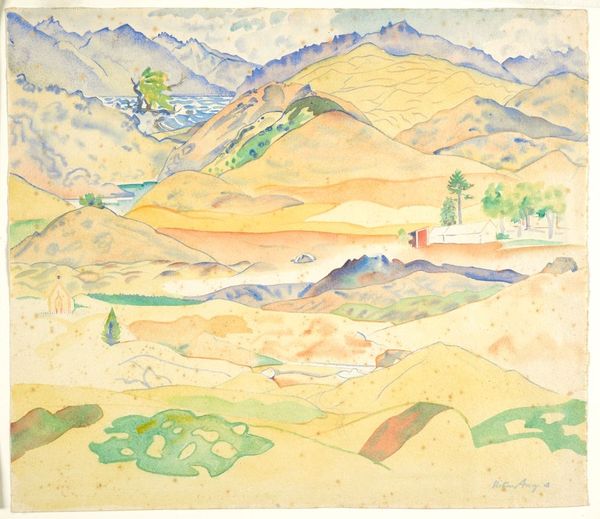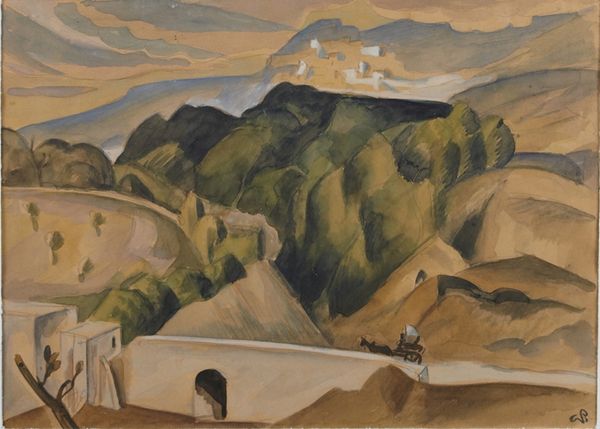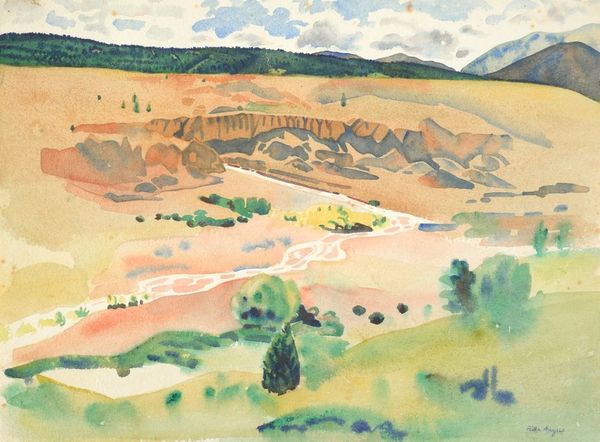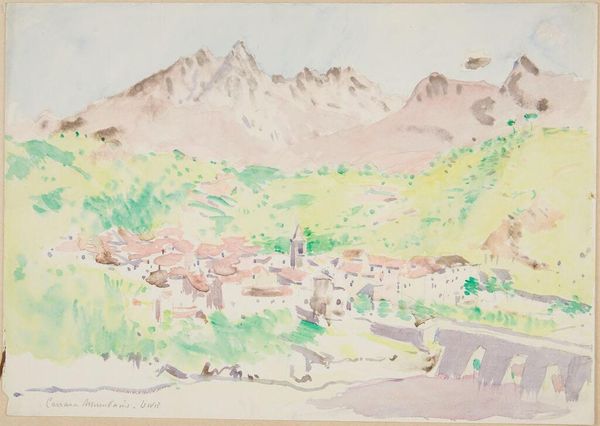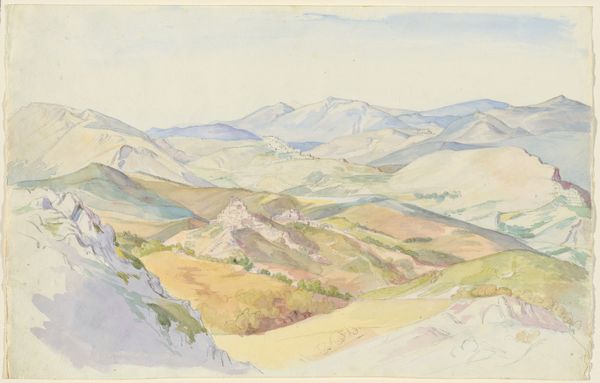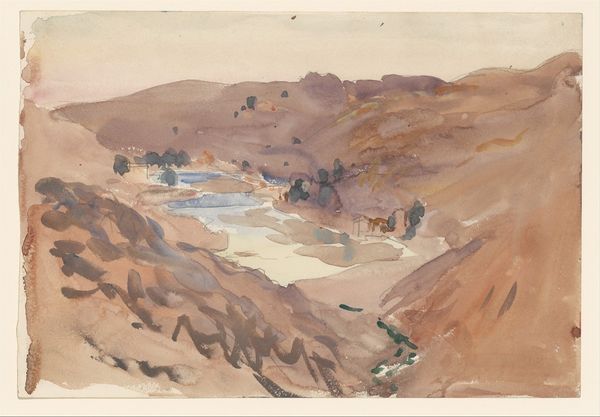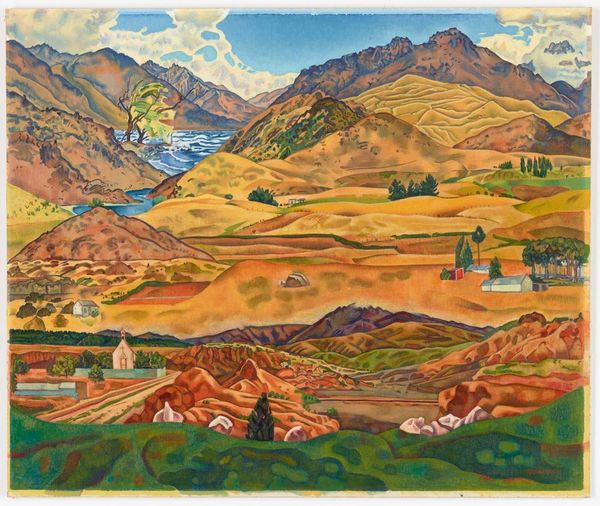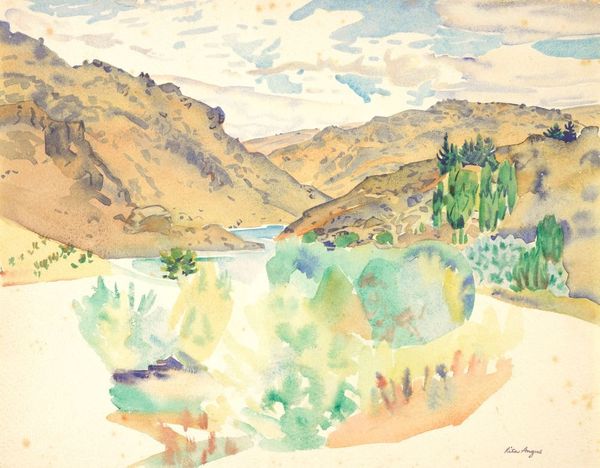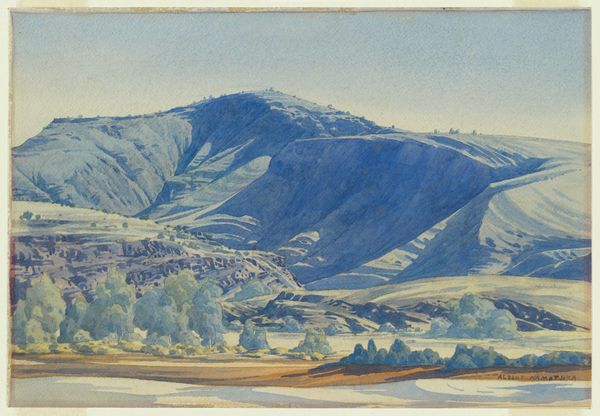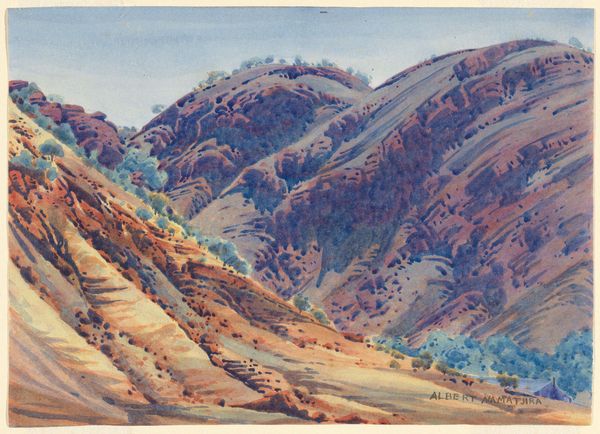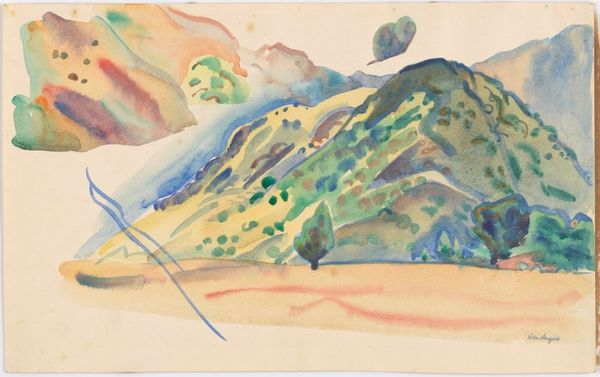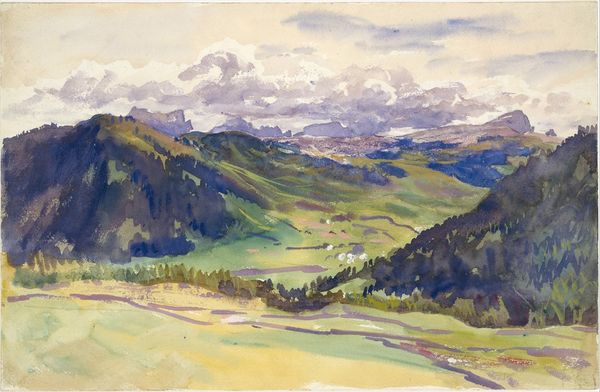
Copyright: Rita Angus,Fair Use
Curator: Here we have Rita Angus's "Sketch for Central Otago (Naseby)," painted in 1953. It's a plein-air watercolour on paper, currently held at the Museum of New Zealand Te Papa Tongarewa. Editor: Oh, instantly peaceful. The geometric shapes soften with the watercolor, it feels very… hopeful, despite the starkness of the landscape. Curator: I think the technique speaks volumes. The rapid, almost utilitarian brushstrokes showcase Angus's engagement with the physical demands of capturing the scene outdoors. Note how she layers the washes to create depth, indicative of the limitations of her medium in situ, away from the studio. Editor: You can almost feel her there, squinting in the bright sunlight, trying to capture the essence before it shifts. Did she labour over this, or was it more of a swift meditation on the place? I bet she made notes right on the page as she was painting too! Curator: She’s clearly engaging with a post-impressionistic lens here, but she's rooted in a very specific materiality, especially through her exploration of New Zealand's landscapes. Also, look at the social dimensions: this era involved specific land development schemes... this art and its consumption can reveal much about the period’s values, even considering the economics of the availability of watercolour paints at that time. Editor: Hmm, makes you wonder if that solitary pine tree she painted so meticulously in the foreground there had been planted deliberately as part of those land schemes... It feels like a little visual promise of new growth. It gives the landscape such a human feel. I mean, I suppose any image of land that somebody selects will inevitably reflect people in some way. Curator: Precisely. Her sketch isn't just representation; it's active participation in shaping how that land is perceived. It asks us about its uses, its commodification. Editor: Makes you consider, if Angus had approached the image with oil paints, would our viewing experience feel any different? It is striking how her materials almost merge with that terrain. It becomes more of a reflection of both, an image but also a process made visual... beautiful. Curator: Exactly! Thanks for expanding our view of the material implications. Editor: A pleasure, thank you! This sketch continues to unfold, revealing so many wonderful details each time you examine the landscape that Rita Angus constructed.
Comments
No comments
Be the first to comment and join the conversation on the ultimate creative platform.
